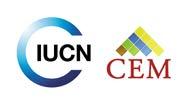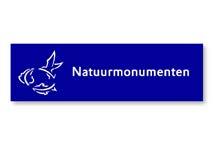RECOMMENDATIONS ON
INSPIRATIONAL, SOCIAL, NATURAL, AND FINANCIAL
RETURNS
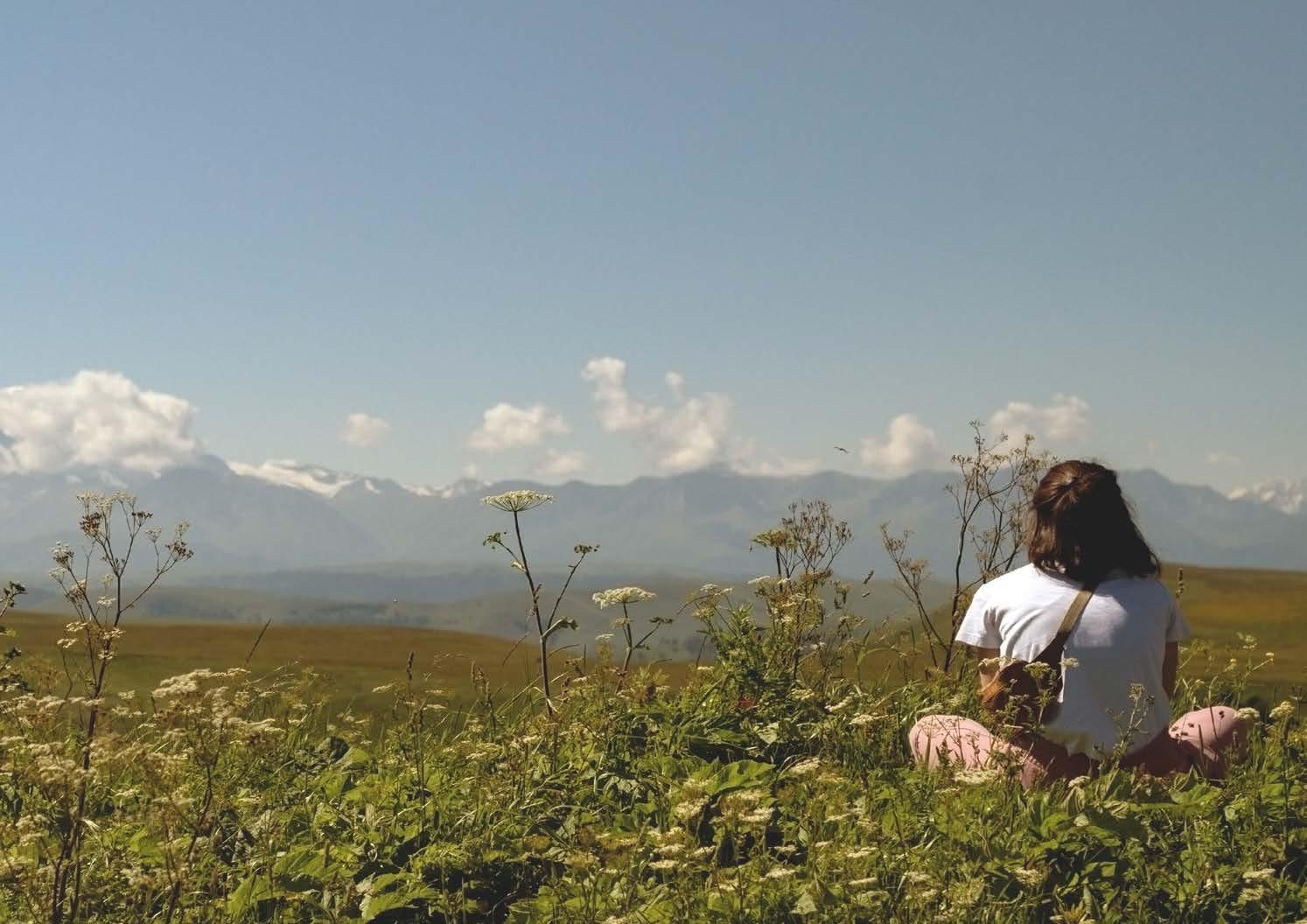



RECOMMENDATIONS ON
INSPIRATIONAL, SOCIAL, NATURAL, AND FINANCIAL



1. The Commission should unequivocally promote holistic landscape restoration, and with it stakeholder and right holder engagement, in the publication of new guidelines informing national restoration plans.
2. In preparing their national restoration plans, Member States should include longterm planning tools linking bottom-up methods involving engaged communities with top-down strategies that take into consideration the timescale and commitment required.
3. The Commission should recommend that national restoration plans budget the costs associated with building strong multistakeholder group processes designed to build trust, create cohesive and inclusive collaborative action, and mitigate conflict at the landscape scale.
4. National restoration plans should include restoration measures designed to develop shared purpose, vision and responsibility among landscape stakeholders.
1. The Commission should conduct a thorough systematic review of the state of holistic landscape restoration in Europe to understand the extent to which the landscape approach is being applied to ecosystem restoration in the region.
2. The Commission should recommend the protection and restoration of biodiversity across both natural and agricultural ecosystems at the landscape scale.
3. The Commission should encourage the integration of landscape restoration into adaptation action planning. In improving their adaptation strategies and plans, Member State governments should implement measures to achieve smarter, more systemic and faster adaptation.
4. The Commission should ensure that all EU policies are aligned with preserving and restoring Europe’s biodiversity and natural capital at the landscape scale.
5. The Commission should provide guidance and promote integrated landscapescale restoration approaches to address cross-border needs and maximise synergies between various land and sea restoration measures.
1. The Commission should mainstream social inclusion and equity objectives in national and subnational landscape restoration plans.
2. The Commission should ensure that national and subnational restoration plans include pro-active measures to address social fairness and justice based on an understanding of the social landscape.
3. The Commission should promote national restoration plans that empower and invest in community-driven landscape restoration programmes that have demonstrable pathways for social investment and impact.
4. The Commission should ensure that national restoration plans include pathways for aligning cross-institutional and organisational arrangements.
1. The Commission should mainstream environmental, biodiversity and climate change objectives in all European funds and programmes deployed at the landscape scale.
2. The Commission should present options for earmarked funding of restoration, to enable the fast tracking of restoration planning and action.
3. The Commission should identify opportunities where climate finance and funds from resultsbased payments can support the delivery of wider landscape objectives; and clarify the role of Article 6 of the Paris Agreement to define future compliance and voluntary carbon markets, and how they can support carbon finance investments in landscapes.
4. The Commission should establish and provide significant finance for technical assistance facilities for the design of landscape scale blended finance mechanisms. Technical assistance promotes bankable projects and mitigates financial risks in the initial phase of restoration projects. The Commission could achieve this via EIB and EBRD and other key institutional financiers.

The European Green Deal (EGD) represents a unique opportunity for Europe to become the first climate-neutral continent and put nature on track to recovery. Launched in December 2019, the EGD focuses on transitioning Europe from a linear to a circular economic model within a restored and climate-resilient environment. We are living through multiple crises and fast-paced changes that include the COVID pandemic, war on the continent, food and energy uncertainty tied to a cost of living crisis. These challenges underscore the urgency of accelerating the green transition in Europe and building awareness of the multiple benefits of a sustainable economic model.
Until now, climate, ecological, agricultural, energy, socioeconomic and health challenges have typically been tackled in silos, with holistic approaches to managing them being far from straightforward. Yet, to effectively reduce global greenhouse gas emissions, meet the 1.5°C Paris Agreement and the EU’s Nationally Determined Contributions targets of 55% by 2030, whilst curbing and reversing the loss of Europe’s biodiversity and soil degradation, integrated and systemic action is essential. It is only through a holistic approach that we can secure sustainable, climate-resilient and regenerative natural systems that concurrently address the complex environmental, social and economic challenges we face.
The spatial scale at which we address these challenges is critical. Landscapes and seascapes1 are compositionally diverse and spatially heterogeneous. They are mosaics of interacting components resulting from biophysical, socioeconomic, cultural, and political processes. The landscape approach allows combined action across a number of these attributes, including the social and cultural values of people living in and shaping them. It aims to balance the unavoidable tensions between production and conservation in participatory and inclusive approaches.
The recommendations outlined here2 offer guidance to EU institutions and Member States on why and how to leverage holistic landscape restoration to substantially, effectively, and efficiently deliver the EGD. Landscape restoration strategies that produce natural, social, financial and inspirational returns can effectively equip the EU to meet its 2050 climate-neutrality goals. While national restoration plans may sit within the “environment” silo, restoration at the landscape scale can generate substantial benefits to business, energy, and finance stakeholders and divisions, especially in the context of climate, agriculture, fisheries, and social justice challenges.
Why landscape restoration? While restoration measures can be designed and implemented at any scale, landscape restoration, rooted in the landscape approach3, can strengthen the effectiveness and accelerate the impact of the EGD by:
� Placing people at the centre of interventions and enabling local communities to be meaningfully engaged in decision-making related to land and water, ensuring their needs are properly addressed, and therefore improving equitable environmental and socio-economic outcomes for present and future generations.
� Promoting intersectoral and interdisciplinary management and planning. Landscapes offer opportunities to integrate and deploy policy priorities efficiently, to identify and resolve disabling policies, and to advance on multiple fronts including the Biodiversity Strategy, Renovation Wave, Farm to Fork Strategy, the Circular Economy, Zero Pollution Action Plans, Forest Strategy, Soil Strategy, Rural Action Plan, Smart and Sustainable Mobility Strategy, and Renewed Sustainable Finance Strategy.
� Serving as a common ground to connect policies at various scales (i.e. subnational, national, international) to practices and outcomes.
� Enabling the assessment of trade-offs, synergies and interlinkages, joint interventions and outcomes, and therefore developing systems knowledge and optimising budgetary resources.
� Fostering strong multi-stakeholder partnerships to respond to challenges, delivering solutions in a concerted way that is socially inclusive, fair and equitable.
� Unlocking larger scales of finance by combined action and delivering results based payments around carbon, biodiversity and other environmental and social outcomes.
� Protecting, restoring and providing the natural capital that underpins most economic activities.
1. For brevity, we use the term landscape to mean both landscapes and seascapes.
2. This brief brings together insights from diverse organisations, disciplines and geographies working in the fields of climate, environment, agri-food, finance and social development. Our aim is to illustrate a restoration pathway that can help achieve a green transition, ensure our ecosystems and the wealth and services derived from them can be effectively managed, justly enjoyed by present generations, and preserved for the long-term benefit of humanity and the species we share the planet with.
3. Denier, L., Scherr, S., Shames, S., Chatterton, P., Hovani, L., Stam, N. 2015. The Little Sustainable Landscapes Book. Global Canopy Programme, Oxford.3.
Environmental and climate issues have historically been at the margins of economic, social and political debates, but increasing scientific evidence demonstrating the relevance and interconnection between these spheres has now placed them at the heart of policymaking. The restoration of ecosystems is no longer confined to the environmental community. Changing the key systems that define the way we live, work, produce and consume in a synchronistic way is an enormous undertaking fraught with complexity. Working at the landscape scale, however, provides opportunities to bring diverse sectors and interests together.
Holistic management approaches in landscapes cut across institutional boundaries and policies including climate action, pollution, biodiversity, and agri-food systems. Landscape approaches typically impact these multiple elements at scales and depths far greater than a single project approach can accomplish. Landscape restoration therefore helps achieve climate neutrality, preserves and restores biodiversity and ecosystems, creates climate-resilient agri-food systems and reduces waste. Restored soils can hold more carbon, improve water quality and availability, and expand natural habitats to support wildlife and the provision of ecosystem services. Landscape restoration positively impacts rural and urban development, reduces or eliminates many sources of pollution, and encourages the development of sustainable and circular industrial processes within more equitable communities. Because the landscape restoration approach promotes inclusivity and active engagement with place and others, it also fosters connection, community and hope.
Landscape restoration places both nature and people at the heart of socioeconomic recovery and growth. This enables us to recognise the inherent value of functional ecosystems for people, ascribe commensurate value to the products and services we derive from them and restore land-based economies that could meet local people’s needs while respecting planetary boundaries. A holistic landscape restoration approach allows for the multi-level governance integration that is crucial for efficient and cohesive policymaking and policy implementation. It promotes the integration of effects across scales and is better placed to tackle the root causes of the interlinked challenges we face whilst creating new opportunities.
The restoration of degraded ecosystems at landscape scale cuts across many aspects of society, including culture, economy, health and politics. It brings together players from various sectors and disciplines with different experiences and interests. Such diverse backgrounds can lead to conflicting perspectives and differences in communication that can pose significant challenges to unified action.
There is a strong need to facilitate dialogue and collaboration through a common language that reduces jargon and is relatable to local and national decisionmakers, land owners, farmers, entrepreneurs, investors and other landscape and seascapes stakeholders. The 4 Returns Framework4 offers such a language and a way to integrate Natural, Social, Financial and Inspirational returns, impacts that result from integrated landscape restoration practices.
The 4 Returns Framework5 presents a simple language that can facilitate shared understanding between diverse parties. It helps them learn about their landscape as they apply new lenses, whilst empowering stakeholders and right holders to use their local knowledge about the land and water to guide sustainable landscape restoration practices. A common language provides a foundation to inspire a shared vision for long-term solutions and systemic change at the scale needed to transform and restore landscapes, and reach the ambitious goals laid out in the EGD.
There is a strong need to facilitate dialogue and collaboration through a common language that reduces jargon and is relatable to local and national decision-makers, land owners, farmers, entrepreneurs, investors and other landscape and seascapes stakeholders.
4. Dudley, N., Baker, C., Chatterton, P., Ferwerda, W.H., Gutierrez, V., Madgwick, J., 2021. The 4 Returns Framework for Landscape Restoration. UN Decade on Ecosystem Restoration Report. Commonland, Wetlands International Landscape Finance Lab and IUCN Commission on Ecosystem Management. 5 The 4 Returns Frameworks is a formula that follows five processes or 5 Elements (i.e., a landscape partnership, shared understanding, landscape vision and collaborative planning, taking action, and monitoring and learning) to help landscape stakeholders achieve the 4 returns across multifunctional landscapes (3 Zones: natural, combined and economic zones) within viable time periods of a minimum of 20 years.
FIG 2. Restoration action at the landscape scale can leverage interactions that target multiple EGD policy targets and measures, with examples of European policy links.
Return of wildlife to forests, connection of nature to local heritage and gastronomy can foster hospitality and ecotourism3 . Agroecology enhances biodiversity, attracts new entrants to farming, promotes local innovation, green jobs and climate-resilient rural development; it fulfills urban demands on safe and healthy food, and supports animal welfare2 .
Hedgerows and agroforestry in farmland create habitats for animals and plants, build connectivity and sequester carbon1 .
Spatial planning at the landscape scale can optimise and balance land-water uses for food and bioenergy production5 .
Rewetting drained peatlands locks up carbon, increases and balances water flows, benefits hydropower and improves water quality4 .
1. Links climate regulation for achieving climate neutrality (EC) No 401/2009 & recommendations for common agricultural policy COM(2020) 846 final
2. Links article 8 of the proposed regulation on nature restoration COM(2022)304 final 2022/0195 COD with specific objective 5 Agriculture and rural development, Ares(2020)4614315
3. Links bio-economy goals of both forest strategy COM(2021) 572 & circular economy action plan COM/2020/98 4. Links climate regulation for achieving climate neutrality (EC) No 401/2009 and (EU) 2018/1999 & zero pollution action plan COM(2021) 400 5. Links Water Directive 2000/60/EC & Renewable Energy Directive 2018/2001/EU
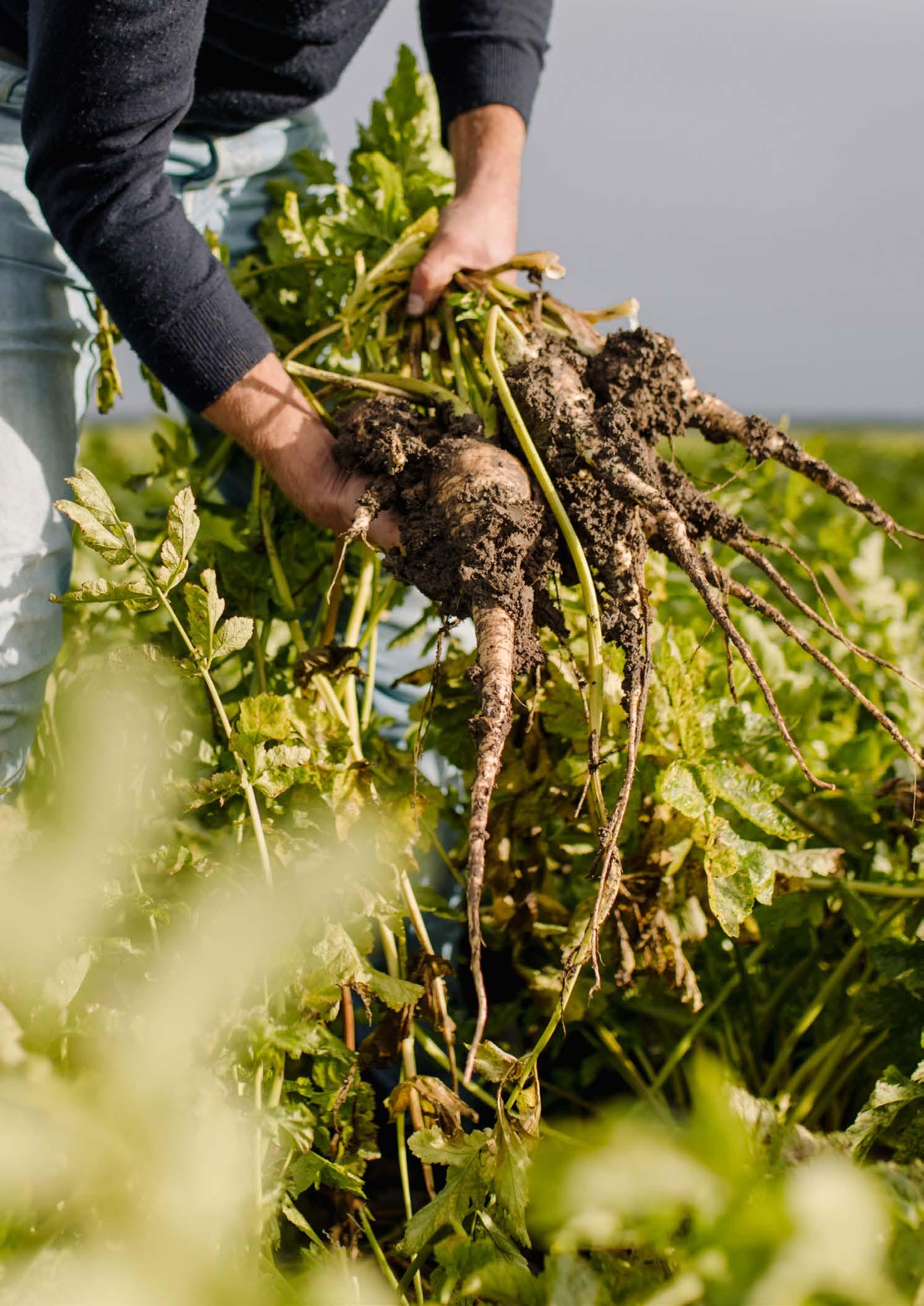
The recommendations that follow have been grouped according to the 4 Returns, which are expected to result from investment in landscape restoration. The return on inspiration, natural, social and financial capital are invariably linked. No return is driven by a single sector and requires coherent responses from multiple policy actors to be effective. This allows us to address the EGD objectives while avoiding a siloed approach. Recognising and giving equal importance to all four returns is fundamental to a successful green transition and sustainable future.
Places and heritage bring meaning and connection to people in landscapes. The degradation or disturbance of ecosystems can disconnect people from their land as they know it, leading to a loss of hope and pride. Repairing this connection can generate a collective sense of responsibility and action. Inspiration that is tied to the land, a shared identity or a shared past can foster and sustain collective action, for example, by activating social networks and enhancing collaboration in communities. Inspiration increases social cohesion and therefore strengthens adaptive responses in uncertain times. Nurturing pathways that can lead to collective agency and inspiration are key to driving and sustaining landscape restoration, and ultimately to delivering on the EU’s green growth targets.
The return on inspiration (re)connects communities to their respective landscapes by bringing local people together to develop a shared vision. Partnerships that are diverse, inclusive, and which build trust between actors, have the capacity to create the shared visions and collaborative action required for landscape restoration. Land owners, family farmers, innovators, business leaders, youth, specialists, experts, and everyone else involved should be viewed as a change agent. Inspiration emerges when people realise that many others share similar dreams and see that it is possible to work together for a more prosperous future.
RECOMMENDATIONS:
� The Commission should unequivocally promote holistic landscape restoration, and with it landscape stakeholder and right holder engagement, in the publication of new guidelines informing national restoration plans. Decision-making processes must engage diverse stakeholders, utilising their local knowledge. Building trust, a belief in a shared purpose, and/or a sense of identity is needed to ensure communities feel collectively motivated to work towards longterm landscape restoration. Creating enabling conditions for transformational change is also critical for vulnerable and marginal groups, including migrants. The Commission could set guidance on minimum criteria for inclusive multi-stakeholder participatory engagement, recognising that these processes can influence the scale and quality of impact.
� In preparing their national restoration plans, Member States should include holistic landscape restoration as a long-term planning tool linking bottom-up methods involving engaged communities with top-down strategies that take into consideration the timescale and commitment required. Promoting meaningful landscape governance structures that are able to translate and appropriately implement national and regional policies at landscape scale through participatory processes is critical to successful ecosystem restoration.
� The Commission should recommend that national restoration plans budget the costs associated with building strong multi-stakeholder group processes designed to build trust, create cohesive and inclusive collaborative action, and mitigate conflict at the landscape scale. Such process costs can stem from multi-stakeholder partnership formation, the development of shared understanding and trust building, and collaborative vision and planning at landscape scale and include systematic methods for guiding stakeholder engagement processes. There are different pathways for achieving inspiration with multiple tools and know-how available. Practices in the AlvelAl territory provide an example6 , where inspiration, education and celebration are an important part of the social glue that drives restoration action.
� National restoration plans should include restoration measures designed to develop shared purpose, vision and responsibility among landscape stakeholders. The Commission should recognise that collective agency and inspiration, as defined by landscape stakeholders and right holders, are critical for sustaining collective action. For example, initiatives could connect nature to local heritage, gastronomy, art and culture, which could strengthen people’s pride whilst serving rural cohesion and socioeconomic development.
In 1998, as part of an EU LIFE project, FGN launched an initiative to enhance biodiversity that today comprises 30 wetlands and 200,000 hectares of steppe habitats including Natura 2000, RAMSAR sites, and expanses of privately owned farmland. Mosaics of wetland, steppes and rainfed cereal farmland are sometimes connected by semi-natural habitats such as hedges, hedgerows, stone walls and ponds. These productive areas are combined-return zones that are vital for the conservation of rare bird species that rely on crop rotation. Engaging with farmers and landowners while creating added value for them was, therefore, essential to protecting biodiversity.
An alliance of six local councils, environmental NGOs and universities were built and, over time, expanded to include farmers' associations, hunting associations, consumers, retailers, and restaurants. Producers - who are also consumers - started recognising the value of natural habitats as a core part of their business. For the past 24 years, efforts have focused on restoring natural, social and financial capital in a collaborative way with encouraging results.
Education and awareness greatly influence a region's ability to transition towards sustainability. And the best way to educate landscape stakeholders is to learn with them. FGN therefore works in the field with hundreds of farmers and has created a landscape network in La Mancha laying the groundwork for new farmers’ associations that integrate biodiversity into their farming goals. More than 300 farmers have signed agreements, covering over 16,000 hectares.
More recently, however, FGN has recognised the return on inspiration and the value in rousing peoples’ pride and sense of purpose to encourage long-term commitment. FGN links biodiversity and place with stakeholders’ businesses and products. It uses ecotourism to promote ecosystem services and local marketing messages to inspire pride and a positive sense of community. For example, “Be proud of this region of La Mancha landscape, its natural values, its steppe birds and its wetlands. Because we are what we eat, food links with culture, landscape and nature as no other product”. With this message FGN is working with local councils, agri-food companies and the regional government to insert ‘Nature’ into the brand of the landscape, to adopt the status of Quijote’s windmills and Manchego cheese. In addition, FGN has developed a series of short videos that tell the stories of people who contribute to conservation, describing their connection to the land.

The protection and restoration of degraded land and waters must be based on long-term planning and action (20 years+) to achieve positive transformative change. The long-term benefits of this approach are key to delivering the EGD’s targets since biodiverse productive ecosystems result in natural returns that are sustainable and directly impact climate ambitions, economic growth, social fairness and justice. The guidance outlined below has implications across a number of policy areas reflected within the EGD.
� The Commission should conduct a thorough systematic review of the state of holistic landscape restoration in Europe to understand the extent to which the landscape approach is being applied to ecosystem restoration in the region, and how this work contributes to climate change mitigation and adaptation, biodiversity, food and water availability and quality, green energy, and equitable socioeconomic development. Such a review would identify best practices and blind spots for addressing multiple policy objectives, identify pathways for delivering the EGD, and serve as a basis for establishing a coherent research programme linked to Horizon2020 and LIFE.
� The Commission should recommend the protection and restoration of biodiversity across both natural and agricultural ecosystems at the landscape scale. Management for biodiversity across different land uses at the landscape scale will deliver more effective EGD outcomes by taking account of ecological dynamics, connectivity, and the mobility of species. Environmental legislation must recognise that wild species use and move across multiple land covers, including forests and woodlands, rivers and wetlands, agricultural lands, and even urban areas, and this will require integrated landscape strategies that encompass several land use sectors.
� The Commission should encourage the integration of landscape restoration into adaptation action planning. Recognising the critical role landscapes play in reducing the impact of floods and droughts, securing clean water supplies, and enabling food security, would strengthen synergies between the proposed EU Nature Restoration Regulation and the Water Framework Directive. In improving their adaptation strategies and plans, Member State governments should implement measures at the landscape scale to achieve smarter, more systemic and faster adaptation.
Integration of landscape restoration into adaptation action planning would recognise landscapes' critical role in reducing the impacts of floods and droughts, securing clean water supplies, and enabling food security.
� The Commission should ensure that all EU policies further contribute to preserving and restoring Europe’s biodiversity and natural capital at the landscape scale as well as to global restoration efforts as it has been spelt out in the Council Conclusion (13975/22). Global focus should incorporate bilateral trade agreements, development assistance and support for the implementation of multilateral environmental agreements (MEAs), including targeted integration of the EU Agricultural Policy, Regional, Energy and Climate policies.
� The Commission should provide guidance and promote an integrated landscape-scale restoration approach that can address cross-border needs and maximise synergies between various land and sea restoration measures. The Commission references the importance of this concept in its Explanatory Memorandum under the subsidiarity: “Restoring one ecosystem helps other neighbouring or connected ecosystems and their biodiversity…”. We recommend reflecting this notion more fully in Article 11.
Ireland currently holds a large proportion of Europe’s remaining functional peatlands, with ‘deep peat’ raised bogs covering up to 1.5 million hectares. However, 30% of this has been drained, forested, mined or converted to pasture, and only a fraction of what remains is protected. These peatlands provide flood attenuation, water filtration, carbon storage, and increasingly recognised amenity services. A limited number of large stakeholders control the vast majority of any remaining functioning or degraded bog, including a semi-state mining company, a semi-state forestry company and the National Parks and Wildlife Service (NPWS). An increasingly diverse set of restoration actors is now emerging to help rehabilitate these areas.
On behalf of NPWS and the European Investment Bank (EIB), the Landscape Finance Lab led a broad consortium of Irish stakeholders including University College Dublin and Natural Capital Ireland, to establish Phase 1.0 of Peatland Finance Ireland. A five-month technical assistance programme between May and November 2021 has demonstrated potential for establishing a financing model to restore peatlands in Ireland and secure significant carbon and related commercial investment.
Currently, Irish peatlands emit more than 5-7 MtCO2 per year. With effective restoration, there is potential to sequester up to 4.5 MtCO2 per annum thereby removing more than 5% of national emissions. Preliminary investigations suggest that a majority of possible restoration actions can be conducted for less than €5/ tCO2e against a current national price for carbon of €33.5/tCO2 or an EU Emission Allowance price of €50-60 EUR/tCO2e. Furthermore, this can be achieved by replacing at least part of the €29M in annual government expenditure with carbon credit purchases from Irish companies who have committed to the science-based targets. Consultations with Irish industry show potential for investable projects and scaling pathways in the energy, forests, agriculture and water sectors. A wide range of government departments and stakeholders have been engaged with workshops confirming broad support for the policy direction.
The aim of Peatland Finance Ireland Phase 2.0, which received the green light from NPWS and EIB in July 2022, will be to establish a national and catchment scale financing system for up to 700,000 ha of peatland restoration in Ireland. This will provide a framework for integrating land restoration with local economies and broader water management by supporting a strategy for scaling a community-led approach and adopting catchment management as a tool.
The objective of the second phase of NCFF assistance will be to finalise the design for financing instruments and investable actions to leverage opportunities on peatlands for creating lasting benefits for regional economies, optimising downstream effects, as well as to investigate possible strategies for decarbonisation of agriculture in peat areas.

The creation of social capital must be at the heart of landscape restoration: a human face that includes regional and local authorities, civil society, social entrepreneurs, businesses, youth, farmers and landowners is paramount to success. Social returns are as important as natural and financial returns since it is people who protect, restore, manage and create wealth in landscapes. Investing in social returns can lead to stronger social networks, improved job opportunities, inclusive governance, and help address injustices that include animal welfare, while generating a fairer distribution of benefits, and the reduction of forced economic migration. This will ultimately contribute to a just transition towards climate neutrality.
For a successful green transition that incorporates the human element, policies should reinforce the need for collective action by both bottom-up actors (e.g., farmers, fishermen, indigenous people, local governments, entrepreneurs, educators, and youth, as well as local nature conservation groups) and top-down operating institutions (e.g., finance industry, business, (inter)national governments).
� The Commission should mainstream social inclusion and equity objectives at the landscape scale in national and subnational restoration plans given that landscape restoration is able to support a societal approach based on co-responsibility, coownership, and participatory governance. Doing so will clarify and help address the social impact of efforts on stakeholders including farmers and small land owners.
� The Commission should ensure that national and subnational restoration plans include pro-active measures taken to address social fairness and justice based on an understanding of the social landscape. Plans at the landscape scale must be based on a solid analysis of social challenges and blind spots. For example, special attention should be paid to where investments are made and returns harvested since the place of investment and returns are not necessarily the same. Also, the actors involved and affected by actions will not be the same. Public disaster risk management, private benefits in restored coastal ecosystems in tourist areas, flood plains allocated to farming, wildlife prevention in the urban-rural interface will impact people differently and proactive measures need to be carefully integrated in landscape restoration strategies and plans.
� The Commission should promote national restoration plans that empower and invest in community-driven landscape restoration programmes that have demonstrable pathways for social investment and impact. National governments should prioritise landscape restoration actions that are rooted in inclusivity and where the benefits generated through restoration action are re-invested or inextricably linked to social impact. Such an approach should contribute to further economic regeneration and strengthen social resilience.
� The Commission should ensure that national restoration plans include pathways for aligning cross-institutional and organisational arrangements at the landscape scale based on an understanding of existing governance systems. Agreements and institutional frameworks must be strengthened to foster alignment between different governance levels and ensure effective transboundary collaboration across institutions and people.
ASHOKA
Landscape restoration at scale cannot lead to systems change without the people who live and shape them. Beyond engaging with motivated stakeholders to deliver a programme, how can people living in landscapes become leaders and changemakers who can drive action? The Bioregional Weaving Labs (BWL) Collective is an international system-changing assembly of organisations that have expertise in effective methods for inclusive stakeholder engagement with practitioner organisations like Savory Institute, AlVelAl and Farming for Nature. The ambition is to mobilise 1 million ‘changemakers’ by 2025 who will contribute to protecting, restoring and regenerating 1 million hectares of land and sea in Europe, with significant and observable impact on the 4 Returns by 2030. To this end, ‘Bioregional Weaving Labs’ are being established in 10 landscapes in Europe to build capacity and catalyse multi-stakeholder partnerships, and to mobilise at least 100.000 changemakers per landscape.
A BWL is a carefully curated multi-stakeholder partnership process that weaves together people and innovations on a landscape scale, equipping them with collective leadership capacity to organise themselves and to drive their own systems change. Inspired by the practice of weaving and bioregionalism7, they align on a shared vision, map the needs of their landscape and gain a clear understanding of the root causes that drive the degradation of natural ecosystems. In an overarching Learning Network, all Weaving Teams and cohorts of the 10 BWLs will continuously learn, build leadership expertise and exchange best practises to also enhance multi-stakeholder partnerships across bioregions.
Each BWL is facilitated by an ambassador and team of local weavers, and starts with a cohort of 60-80 committed stakeholders in a landscape. This cohort will be equipped to engage their own communities, and eventually to mobilise tens of thousands of people per landscape to become changemakers and actively participate in tangible actions with the highest environmental and socioeconomic impact, analogous to a snowball effect.

The Weaving Team in Waterford, an Irish county covering 185,000 hectares, conducted workshops with 28 stakeholders in July 2022: The participants consisted of 1) people working with nature-based solutions, education and social innovations for landscape regeneration and food sustainability in Waterford’s wider bioregion; 2) Community groups from Tramore as a case study town where changemakers live and grow up; and 3) ‘Systemplayers’ who can affect the deeper levels of change, no matter where they live.
During the first workshop, the 4D modelling technique was used to co-create a mission for the landscape. The county has premium grassland and a favourable climate which puts Waterford & neighbouring county Wexford at the forefront of an intensification of farming and export led agrifood. Waterford county is expected to grow 60% demographically by 2040 with about 83,000 new jobs needed, putting enormous strain on the environment. A joint mission was formulated to create a resilient food system that supports communities and ecosystems in the Waterford landscape.
After individual consultation with nearly 100 stakeholders and a series of workshops in August and September 2022, a manifesto was produced with input from 40 stakeholders, which expresses the intention of committing to long-term landscape collaboration. The snowball effect so far is that the Irish Weaving Team will launch a Bioregional Weaving Lab with 60-80 committed stakeholders in the first quarter of 2023.
Landscape restoration offers multiple opportunities for medium and long-term financial returns. For example, the Commission estimates a 1:8 EUR return on investment in nature. Building sustainable business models into restoration pathways in landscapes can increase the value of natural resources, their products and services, and natural capital stock. As a long-term endeavour, holistic landscape restoration offers new perspectives on value and financial returns, from income to capital gains. Moving away from the current short-term financial return model to a long-term integrated natural, social, inspirational and financial return approach recognises the interlinkages between multiple objectives. Landscapes under restoration can offer attractive investment opportunities that enable sustained financial returns, while providing incentives to link economic activity with positive, sustainable practices consistent with the EGD’s objectives. Restoration protects and restores important natural capital and ecosystems that are critical for economic activities and GDP growth.
The EU has indicated that at least €20 billion a year should be invested into restoring ecosystems.8 Such commitments are welcome but engaging the private sector will be critical since the government alone cannot restore and protect all ecosystems. The private sector is often disinclined to invest in restoration due to relatively high risks, long-term return horizons and significant process costs of landscape interventions. Despite these deterrents, there are a number of tools and strategies that can be employed to engage the private sector in landscape interventions that can restore and protect ecosystems.
� The Commission should mainstream environmental, biodiversity and climate change objectives in all European funds and programmes deployed at the landscape scale and consider nature and climate systems as key elements for resilient societies and economies. This can be supported with the standardisation and harmonisation of restoration metrics across key EU reporting so that tangible outcomes can be efficiently measured and compared. Greater clarity could improve stakeholder confidence and investment into the EGD’s focus areas.
� The Commission should present options for earmarked funding of restoration, still within this current multiannual financial framework to enable the fast tracking of restoration planning and action. A “dedicated restoration fund” could receive earmarked funding from various DGs, such as DG Regio or DG AGRI, for the implementation of the Nature Restoration Law. Also, a dedicated fund could be constructed in a way that allows it to receive resources from the private sector and philanthropic donors. It could provide resources either in a “competitive” manner, such as the EU LIFE instrument or national “envelopes”, based on the National Restoration Plans’ costs estimates. Lessons learned could feed into the new multiannual financial
discussion for creating a larger “nature fund” incorporating restoration costs.
� Identify opportunities where climate finance and funds from results based payments can support the delivery of wider landscape objectives, including restoration, improved biodiversity, climate change adaptation and mitigation, and socioeconomic development. The Commission should clarify the role of Article 6 of the Paris Agreement, which will define future compliance and voluntary carbon markets and how they can support carbon finance investments in landscapes.
� With the European Investment Bank and the European Bank for Reconstruction and Development and other key institutional financiers, the Commission should establish and provide significant finance for technical assistance facilities for the design of landscape-scale blended finance mechanisms. Technical assistance can support bankable projects and mitigate financial risks in the initial phase of restoration projects and make them more attractive to private investors. This could include investment in blended finance systems for implementing nature and other EGD related targets. The Commission should establish an incubation and investment program in start-up and commercial innovation to test new landscape approaches and landscape scale investments.
Long-term and unrestricted grant funding is required to support the development of multi-stakeholder partnerships and associated processes, including the development of business opportunities. Doing so is crucial for building trust, cohesion and coordinated action in landscapes, and for a pipeline of investment-ready opportunities in landscapes.
Investments into early-stage business cases will be inherently risky, but for landscape restoration in particular, these opportunities may also carry an additional business model risk as previously untested models are launched. However, investing in the development of an enabling environment (e.g., the development of relationships and capacity through long-term and unrestricted grant funding) at landscape-level will lower investment risks and enable an accelerated involvement of private sector investors.

Since 2014, AlVelAl Association in the Altiplano Estepario in Southeastern Spain has been working on an ambitious landscape restoration project in an area spanning 1 million hectares based on the 4 Returns Framework. Its 400+ members include farmers, local governments, community members, businesses and entrepreneurs, universities, research institutions, and other stakeholders. Commonland has actively supported AlVelAl since 2014 with long-term and unrestricted grant funding. AlVelAl was able to roll out initiatives to help farmers transition to regenerative agriculture in the landscape, kick-start and support 4 Returns regenerative businesses, restore natural zones by optimising ecological functioning, and roll out projects designed to inspire others to join their restoration effort. Providing initial funding without restrictions on the use of monies has helped catalyse the same amount from third-party donors and investors. In 2021, Commonland developed a valuation tool to estimate the 20-year net present value (NPV) of landscape restoration, through which an estimate was found for the value of natural, social and financial returns of restoring only 7.5% of the Altiplano Estepario of between USD 35 million and USD 218 million.
AlVelAl has promoted the development of a 4 Returns business environment to commercialise regenerative products from the landscape, including La Almendrehesa for almonds, Hábitat for olive oil, and AlVelAl Foods to support commercialisation of all products from the territory, including through e-commerce. These new businesses have attracted local and international private sector investment to the landscape, as well as local government support. The objective continues to jointly create a thriving regenerative economy which can generate financial returns for the landscape.
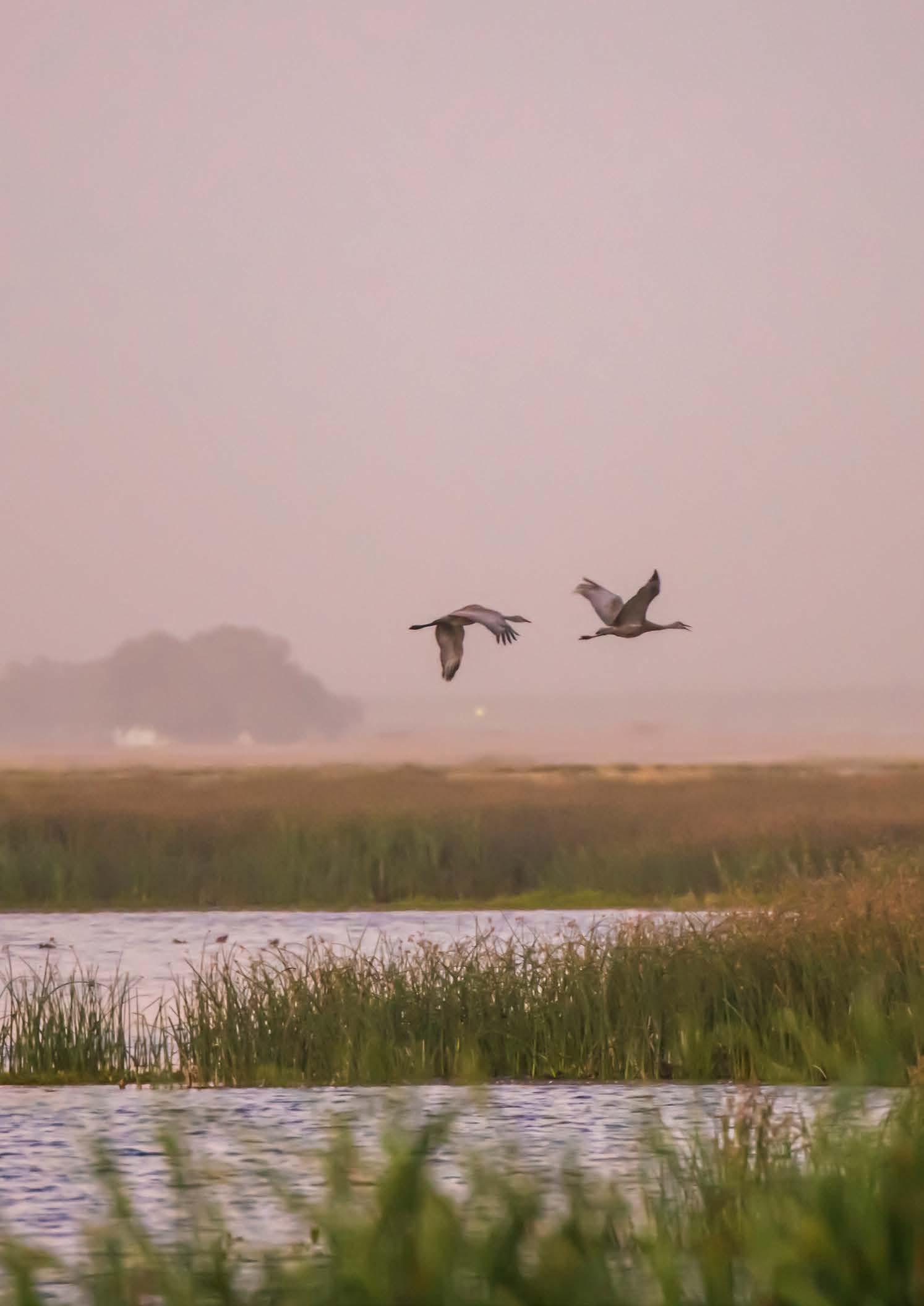
LEAD CONTRIBUTOR: Victoria Gutierrez, Head of Global Policy, Commonland
Jordi Cortina-Segarra, Professor, Universidad de Alicante & Chair, SER Europe
Helen Ding, Senior economist, World Resources Institute
Jaboury Ghazoul, Professor of Ecosystem Management, ETH Zurich
Cy Griffin, Senior Conservation Manager, European Federation for Hunting and Conservation
Madeleine Hill, Investor Engagement, Climate Catalyst
Richard Illife, MRV Manager, Gold Standard Foundation
Andras Krolopp, Senior Policy Adviser, The Nature Conservancy
Karin Muller, Co-director, Ashoka Netherlands
Patrick Nuvelstijn, Coordinator European and International Affairs, Natuurmonumenten
Merlijn van Waas, Head of Sustainable Development, CARE Nederlands
Astrid Vargas, Founder, Inspiration 4 Action
Patrick Worms, Senior Science Policy Advisor, CIFOR-ICRAF
Daniel Zimmer, Director Sustainable Land Use, Climate-KIC
Jasper Bertels, Landscape Finance Expert, Commonland
Alejandro Díaz, Landscape Finance Specialist, Commonland
Killian Waltz, Carbon Project Specialist, Commonland
Deesha Chandra, Learning Lead, Landscape Finance Lab
Paul Chatterton, Founder and Lead, Landscape Finance Lab
Lucy Garrett, Technical Landscape Advisor, Landscape Finance Lab
Yurena Lorenzo, Head of Office and Programme Manager, Wetlands International
Elton Mudyazvivi, Programme Manager, Wetlands International
Cinthia Soto, Wetlands International
Sabrina Russo, Design, Typesetting & Illustration
Anjou Dargar, Editing
Cover Image, © [Roman] / Adobe Stock
Page 6 Image, © Schokker Fotografie
Page 8 Image, © Rafael Abuín
Page 10 Image, © Sabrina Russo
Page 12 Image, © Ashoka
Page 15 Image, © [MierCat Photography] / Adobe Stock
Published November 2022.
This project has been carried out by 4 Returns Partners - Commonland, Landscape Finance Lab and Wetlands International - with financial assistance from the COmON Foundation.

